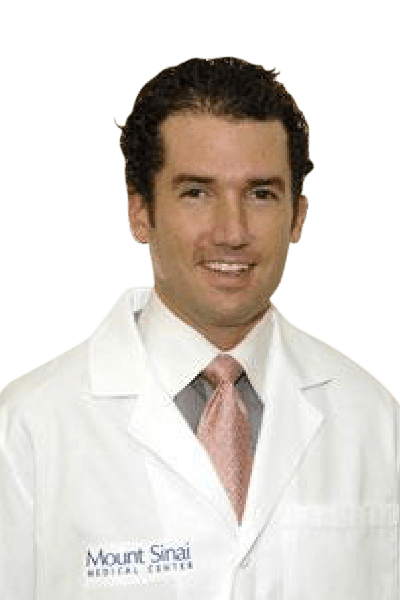Molecular Imaging
Molecular imaging uses very small amounts of radioactive materials inside the body to create an image of organ function and structure for diagnostic and treatment purposes. This imaging allows disease to be detected very early, often before the disease can be detected by other diagnostic tests and, in some cases, before symptoms ever occur. The biggest advantage of such early detection is to allow earlier treatment which gives the best chance for a more successful outcome. An additional advantage is the ability to visualize, locate, and study malfunctioning and diseased tissue within the body often avoiding other invasive surgical procedures.
Molecular imaging services include:
Definition
A bone scan is a nuclear imaging test that helps track or diagnose several types of bone disease. If you have unexplained skeletal pain, bone loss, bone infection or a bone injury that cannot be detected on a standard X-ray, your doctor may want you to complete a bone scan. A bone scan is also important in cancer care and treatment, as it will assist in determining if cancer has spread (metastasized) to the bone from a tumor that started in a different area, such as the breast or prostate. A bone scan can also detect abnormalities related to leukemia and lymphoma.What to Expect
First, you will receive an injection of tracers into a vein in your arm. Images may be taken immediately after the injection or several hours later, depending on the reason your doctor ordered the exam. Most of our patients are asked to return three hours after injection for imaging, or after enough time has passed to allow the tracers to circulate through your bloodstream and be absorbed by your bones. During the scan, you will be asked to lie still on a padded table. Our technologist will take special care to make sure you are as comfortable as possible during the scan. An arm-like device will move back and forth over your body to take pictures of the tracers using a sensitive camera. The entire scan can take 60 minutes and is virtually painless. After the scan, you may be asked to drink extra water to remove unabsorbed radioactive materials from your system. Once inside your body, the tracers are not active for long. You should feel no side effects after the procedure, and no special care is necessary.How to Prepare
Tell your doctor if you’re pregnant or think you might be pregnant. Bone scans aren’t usually performed on pregnant women or nursing mothers because of concerns about radiation exposure to the baby. Otherwise, no preparation is necessary.Results
Our specially trained radiologists will interpret your scan for evidence of abnormal bone metabolism. These show up as darker “hot spots” and lighter “cold spots” where the tracers have or haven’t accumulated. If you have a bone scan that shows hot spots, more testing may be needed to determine the cause, since bone scans are not able to determine the cause of the hot spot. To focus on specific areas of bone, your doctor might order additional imaging called single-photon emission computerized tomography (SPECT).Definition
Cardiac stress imaging measures the blood flow to your heart muscle, both at rest and during inflicted stress. It’s performed similarly to a routine exercise stress test, but provides images that can show areas of low blood flow and heart muscle damage.
A nuclear stress test usually involves taking two sets of images — one during an exercise stress test while you’re exercising (usually on a treadmill or stationary bike, or with medication that stresses your heart) and another set while you are at rest. The stress test will gather information about how well your heart works during physical activity and at rest.
You may be given a cardiac stress imaging test if your doctor suspects you have coronary artery disease, heart problems, or if a stress test alone wasn’t conclusive for symptoms such as chest pain or shortness of breath. A cardiac stress test may also be utilized to guide your treatment if you’ve already been diagnosed with a heart condition.
What to Expect
Your doctor will inquire about your medical history, including how often you typically exercise. This will determine the amount of exercise that is appropriate for you during your stress test.
Before you start the test, stickers/patches (electrodes) will be placed on your chest, legs and arms. The electrodes are connected by wires to an electrocardiogram (ECG or EKG) machine. The electrocardiogram records the electrical signals that trigger your heartbeats. A blood pressure cuff is placed on your arm to check your blood pressure during the test. If you’re unable to exercise adequately, you may be given a medication that increases blood flow to your heart muscle.
You be asked to begin walking on the treadmill or pedaling at the stationary bike slowly. As the test progresses, so will the difficulty due to increases inthe speed and incline of the treadmill or the resistance of the bike. A railing is provided on the treadmill that you can use for balance. You may stop the test at any time if you are too uncomfortable to continue exercising. The length of the test will depend on your physical fitness and symptoms. The goal is to have your heart work hard for about eight to 12 minutes in order to provide a thorough analysis of its function. You will continue exercising until your heart rate has reached the set target, or you develop symptoms or warning signs that prevent you from continuing. This includes moderate to severe chest pain, shortness of breath, high or low blood pressure, abnormal heart rhythm or dizziness.
Injection of dye
Once you’ve reached your target level of exercise, a radioactive dye will be injected into your bloodstream through an intravenous (IV) line in your arm or hand. The dye will travel through your heart as a special scanner similar to an X-ray machine creates images of your heart muscle.
After your test, you will be asked to rest for two to four hours. During this time, you should not eat or drink anything or perform any strenuous activities. You will then have a second injection and set of images taken of your heart while you lie on an examination table. This allows your doctor to compare the difference of blood flow through your heart while you are exercising and at rest. When your nuclear stress test is complete, you may return to your normal activities.
How to Prepare
Do not eat or drink anything at least three hours before your test. Please review your medications with your doctor ahead of time, and wear comfortable clothing the day of the test.
If you use an inhaler for asthma, bring it with you to the test. Make sure your doctor and the health care team member monitoring your stress test know that you use an inhaler or have breathing problems.
Results
One of our specially trained radiologists will analyze the images from your scan and report the findings to your doctor. Your doctor will then discuss any important findings and next steps with you. If your test results show you don’t have enough blood flow through your heart, you may need to undergo CT angiography or MR angiography, which are tests to help radiologists look directly at the blood vessels supplying your heart.
Definition
A positron emission tomography (PET) scan is an imaging test that can help reveal how certain components of your body are functioning. A small amount of radioactive material is necessary to show this activity. By combining PET images with CT images, we can provide greater clarity of findings in your study.
What to Expect
The PET scanner is a large machine that looks like a giant doughnut standing upright, similar to a computerized tomography (CT) machine. You will receive a small amount of a radioactive substance intravenously through an I.V., during which you might briefly feel a cold sensation moving up your arm. Our technologist will take special care to make sure you are as comfortable as possible.
You must wait 30-60 minutes for the radioactive substance to be absorbed by the body before imaging. After the specified time has passed, you will be asked to lie on a narrow table that slides into the PET scanner’s opening. The test itself is painless, but you must lie very still or the images will be blurred and can limit evaluation. It takes about 30-40 minutes to complete this part of the test, during which time you’ll hear buzzing and clicking sounds.
How to Prepare
Before undergoing your PET scan, be sure to tell your doctor about any prescription and over-the-counter medications you’re taking, as well as any vitamins and herbal supplements.
A general rule is to not eat anything for six hours before your scheduled procedure, preferably from the night before. You can drink water to take medication. You also can drink plain water right up to the time of your appointment but do not drink anything else like soda or coffee. If you have diabetes, you can take insulin or other diabetic medication until six hours before your PET scan. Your last meal should be low in or free of carbohydrates, and you should avoid exercising 24 hours before your PET scan. Avoid chewing gum on the day of the exam.
Wear comfortable clothes to your appointment. You may be asked to change into a hospital gown for the test. If you’re pregnant or think you might be pregnant, tell your doctor before undergoing a PET scan. A trained PET technologist will speak to you before the scan and obtain the necessary medical history, complete a screening process and answer any questions you may have.
Results
One of our specially trained radiologists will analyze the images from your scan and report the findings to your referring physician or primary care doctor. Your doctor will then discuss any important findings and next steps with you.
- Locates cancerous lesions with greater ease and precision which enables physicians to make more confident diagnoses and helps the referring physician to plan the most effective therapy.
- Used in tumor staging and in determining the effectiveness of a particular treatment.
- Easier and more exact surgical and radiation therapy planning which avoids damaging surrounding vital structures.
- Delivers a very low dose of radiation, maintaining patient safety standards.
- Reduces risk of misdiagnoses that can result in incorrect therapy and suboptimal patient care.
Definition
A single-photon emission computerized tomography (SPECT) scan allows your doctor to analyze the function of some of your internal organs. A SPECT scan is a type of nuclear imaging test, which means it uses a radioactive substance and a special camera to create 3-D pictures. A SPECT scan produces images that show how your organs work. For instance, a SPECT scan can show how blood flows to your heart or reveal what areas of your brain are more active or less active.What to Expect
First, you will receive an injection of tracers into a vein in your arm. The tracer dose is very small, and you may feel a cold sensation as it enters your body. You will then be asked to lie quietly in a room for 15 minutes or more while your body absorbs the radioactive tracer. In some cases, you may need to wait several hours between the injection and your SPECT scan to wait for your organs to absorb the tracer.The SPECT machine is a large circular device containing a camera that detects the radioactive tracer your body absorbs. Your body’s more active tissues will absorb more of the radioactive substance. You lie on a table while the SPECT machine rotates around you. The SPECT machine takes pictures of your internal organs and other structures. The pictures are sent to a computer that uses the information to create 3-D images of your body. How long your scan will take depends on the reason for your procedure. After your SPECT scan, most of the radioactive tracer leaves your body through your urine within a few hours. Your doctor may instruct you to drink more fluids, such as juice or water, after your scan to help flush the tracer from your body. Your body breaks down the remaining tracer over the next day or two.How to Prepare
Tell your doctor if you’re pregnant or think you might be pregnant. Notify your health care team of any medications you are taking. Otherwise, no preparation is necessary.Results
One of our specially trained radiologists will analyze the images from your scan and report the findings to your doctor. Your doctor will then discuss any important findings and next steps with you.Definition
The thyroid scan and thyroid uptake imaging test provide information about the structure and function of the thyroid. The thyroid is a gland in the neck that controls metabolism, which is a chemical process that regulates the rate at which the body converts food to energy.
A physician may perform a thyroid uptake imaging test to determine if the gland is working properly; help diagnose problems with the thyroid gland, such as an overactive thyroid gland; detect cancer or other growths; and assess issues with the functionality of the gland.
What to Expect
You will be given radioactive iodine (I-123 or I-131) in liquid or capsule form to swallow. Your thyroid will begin to absorb the iodine several hours to 24 hours later, which is when the images will be taken. When it is time for the imaging to begin, you will sit in a chair facing a probe that will scan over the area of the thyroid. Actual scanning time for each thyroid uptake is five minutes or less.
How to Prepare
Patients must be off thyroid medications for four weeks before the test can be performed. In the days prior to your examination, blood tests may be performed to measure the level of thyroid hormones in your blood. You may be told not to eat for several hours before your exam because eating can affect the accuracy of the uptake measurement.
Results
One of our specially trained radiologists will analyze the images from your scan and report the findings to your referring physician or primary care doctor. Your doctor will then discuss any important findings and next steps with you.
Definition
Computerized tomography (CT) scanning combines special X-ray equipment with sophisticated computers to produce multiple images of the inside of the body. A series of X-rays are taken from many different angles that produce cross-sectional images of your bones and soft tissues. CT scan images provide much more information than plain X-rays and are an efficient, painless exam.
What to Expect
Before your CT, you may be asked to remove your clothing and change into a hospital gown. You will need to remove any metal objects, such as jewelry, that might interfere with imaging. CT scanners are shaped like a large doughnut standing on its side. You will be asked to lie on a narrow table that slides into the “doughnut hole” or gantry. As the X-ray tube rotates around your body, the table slowly moves through the gantry. While the table is moving, you may need to hold your breath to avoid blurring the images.
A technologist will be watching you from the next room and you will be able to communicate with him or her via intercom, should you need any assistance during the scan. CT scans only take a few minutes.
How to Prepare
To properly visualize some areas, you may need to fast for a period of time beforehand or receive contrast orally or intravenously. Movement blurs the images and may lead to inaccurate results. Ask your doctor how best to prepare if you think you may have issues remaining still during the exam.
- IF YOUR SCAN REQUIRES CONTRAST: All CT patients scheduled for abdomen, pelvis, adrenals, liver, retro, pancreas or kidney scans must drink oral contrast as follows: by 8 p.m. the night before the appointment (if the appointment is scheduled before noon the following day) or by 7 a.m. the same day (if the appointment is scheduled after noon). Also, the patient must not eat or drink for four hours prior to the procedure.
- Do not drink oral contrast for CT kidney scans if you have a diagnosis of kidney stones.
- The oral contrast prep can be picked up Monday – Friday 8 a.m. to 6 p.m. at both of our diagnostic centers or at your physician’s office during business hours.
- Patients scheduled for CT enterography (images of the small bowel) must not eat or drink anything, including medications, for four hours prior to the procedure. Patients must report to the diagnostic center at least one hour prior to the appointment time. At this time, they will be given 16 ounces of water and a contrast agent to drink over the course of the hour before the test. Patients may empty their bladder prior to the scan.
- Patients scheduled for CT rogram (images of the urinary tract) must not eat or drink anything after midnight the night before the scan.
Results
One of our specially trained radiologists will review the images from your scan and generate a report of any findings. Either the doctor who performed your test or the doctor who asked you to have a CT angiogram will discuss the results of the test with you.
Our Physicians
Chetan Rajadhyaksha, MD
Chairman, Department of Radiology
Chief, Section of Nuclear Imaging
- Radiology
- Nuclear Imaging
- Mount Sinai Medical Center (Main Campus)
- 305.674.2121
William F Burke III, MD
Chief, Section of Thoracic Imaging
Vice Chairman, Department of Radiology
Program Director, Radiology Residency Program
- Radiology
- Mount Sinai Medical Center (Main Campus)
- 305.674.2121
Vinay Bhatia, MD
Section Chief Neuroradiology
Director of MRI Services
- Neuroscience
- Neuroradiology
- Radiology
- Mount Sinai Medical Center (Main Campus)
- 305.674.2121
Stuart S Kaplan, MD
Chief, Section of Breast Imaging, Breast Ultrasound and MRI, and Breast Interventional Procedures
- Cancer
- Oncology
- Radiology
- Breast Imaging
- Mount Sinai Medical Center (Main Campus)
- 305.674.2121
- Mount Sinai Medical Center (Main Campus)
- 305.932.4766
- Mount Sinai Emergency Center, Physician Offices, Cancer Center and Diagnostic Center Aventura
- 305.692.1010
Marcia C. Javitt, MD, FACR, FSAR, FSRU
Director of Radiology Research and Scholarly Services
- Radiology
- Mount Sinai Medical Center (Main Campus)
- 305.674.2121







